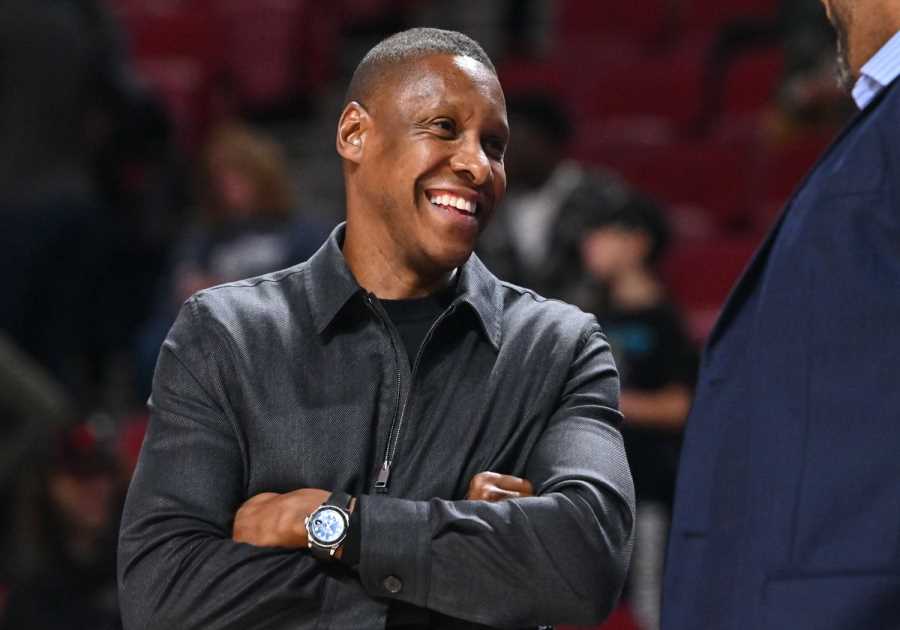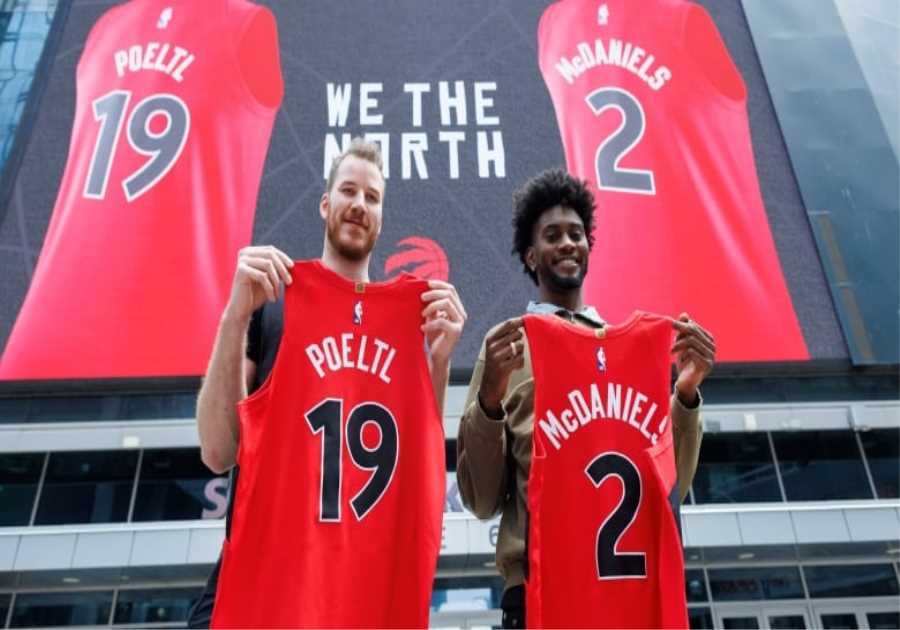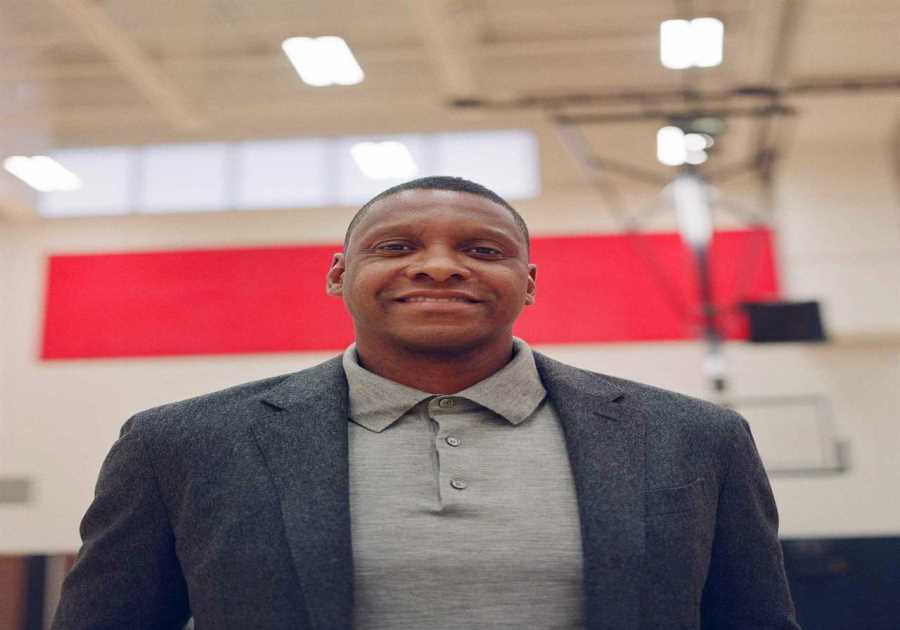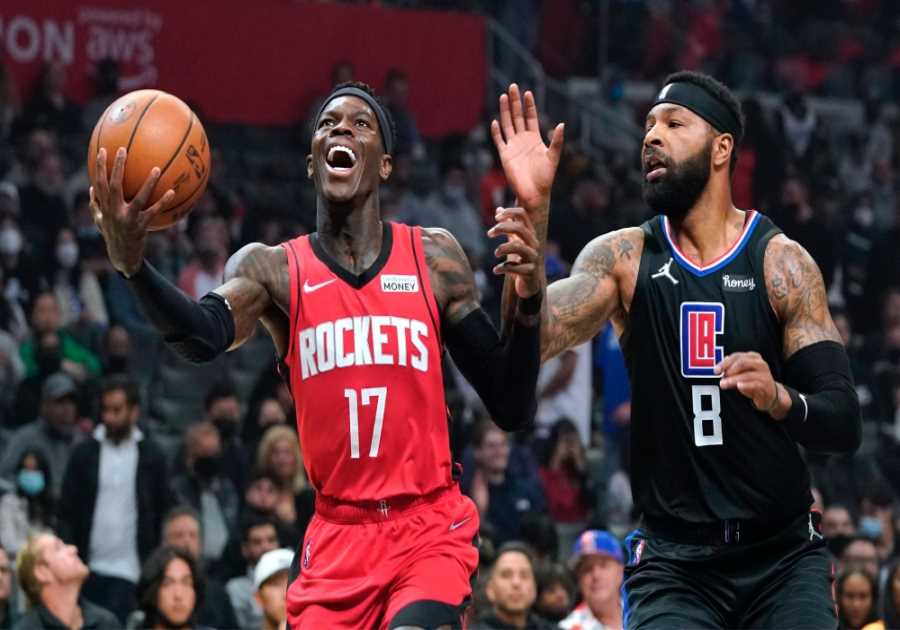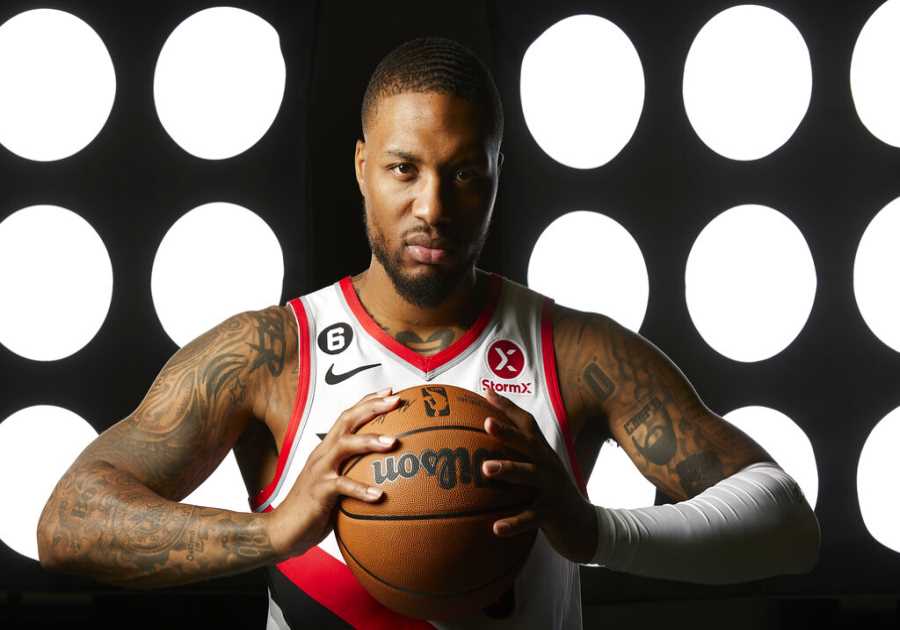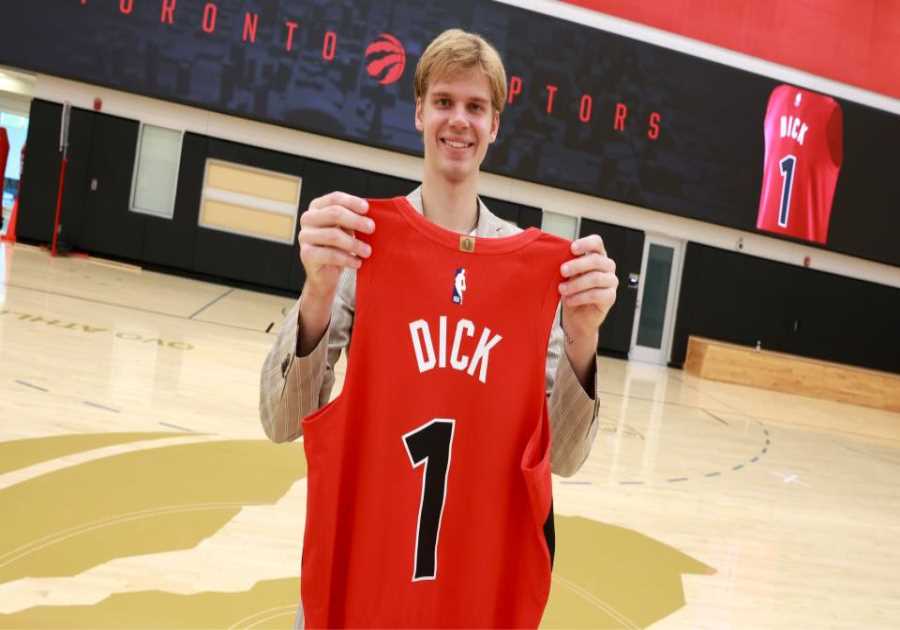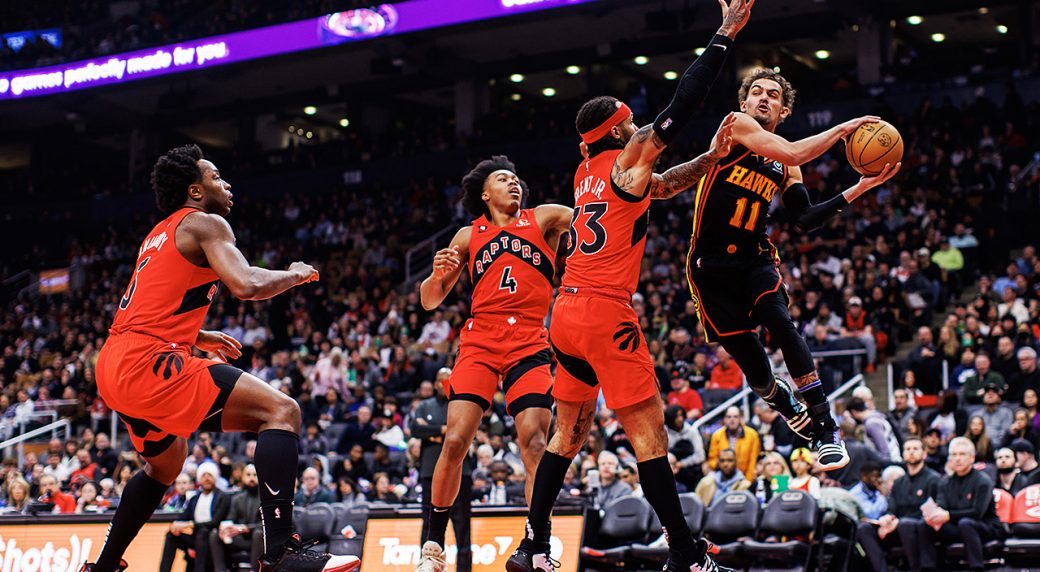
Late in a game against the Charlotte Hornets last week, the philosophy underlying the Toronto Raptors’ defence was laid plain.
Up 10 with a little over four minutes to go, the Raptors forced a Charlotte turnover on a fairly routine play. Terry Rozier came around a Mason Plumlee screen, saw a help defender, and made a quick pass to LaMelo Ball. Plumlee then made a late roll to the paint after his defender had committed toward Rozier and Ball. This is a form of “shorting” the pick-and-roll, adding an extra step for the offence to confuse the defence. Plumlee was alone cutting to the rim.
Because of the Raptors’ length and aggression — and yes, a poor pass from Ball — Plumlee never received the pass. Scottie Barnes had shifted into a sort of coverage-zone at the elbow rather than scampering back to put a body on Plumlee immediately. Rather than putting out a fire that never started, Barnes was in position to pick off the pass.
More importantly than the turnover itself was the imprint it left on the Hornets over those final few minutes. Down the stretch, Ball opted for a tough floater instead of a lob to a relatively open Plumlee at the rim, and Rozier looked off a Plumlee pass to make a wild kick-out to Ball. In a rematch two nights later, Ball once again coughed it up trying to find Plumlee seemingly open — this time to O.G. Anunoby — on a key clutch possession. At a pivotal moment shortly after, Rozier looked off a wide-open Plumlee underneath the net on a pass even the most Rozier of ball-handlers normally makes.
Yes, it was just the Hornets, but if you wanted an example of why the Raptors don’t ease off the throttle when it comes to their defensive aggression, this is why. It’s not only about forcing turnovers; it’s also about creating an enduring sense of discomfort and second-guessing for their opponents. Given certain caveats and personnel limitations, it makes sense.
It’s just not working anymore.
The Raptors begin their seven-game, 12-day road trip out west ranking 19th in the league in defensive rating (17th if we filter out “garbage time” where teams are shown to put in lesser players and focus, uh, a little less on defending). This isn’t the formula for this particular group. At the start of this year, and 2021-22 before it, the formula went something like this: Be the league’s best transition offence, cobble together an average halfcourt offence if you can, and leverage a top-10, hopefully top-five, defence.
It wouldn’t always be pretty, but the Raptors’ No. 10-ranked defence and top-three transition attack were enough to win 48 games last year even with an anemic halfcourt attack. This year, the Raptors are even better in transition, getting out on the run more than any other team except the Pacers (who lead by a fraction of a fraction) and topping the league in points per-possession in transition. In other words, they’re the most high-volume and most high-efficiency transition attack. The halfcourt offence remains a slough. Based on their formula, though, that should be fine if the defence was holding up its end of the bargain.
It’s not. Not even close. And the why underlying that truth is difficult and multifaceted.
Before we get into some of the specifics, let’s address two popular but inaccurate explanations for the defensive slide. The first is injuries. While the Raptors have had their share, that was the case last year, too, and this year’s group ranks in the middle third of the league in terms of games and value lost to injury. Precious Achiuwa missing so much time is certainly a factor given he’s one of the team’s most important defenders, but he was playing 20 minutes off the bench before his injury, hardly enough to sink a team’s entire defence.
The second is that the poor offence is leading to poor defence. This is a maddening theory because the entire offensive philosophy is predicated on the defence helping the offence by creating transition opportunities. You can’t blame the defence for being bad because the offence is bad because the defence is bad because the offence is bad. You know? This explanation also doesn’t hold water because the team was as bad, in relative terms, on offence last year, and because they’re actually a pretty good transition defence. The Raptors are the seventh-best team in the league at limiting opponent transition opportunities and they’re average on a points per-possession basis. The bulk of their struggles have come when their defence is set in the halfcourt, where they rank 22nd.
Opponent quality isn’t a factor either as teams have tended to over-perform their baseline against the Raptors.
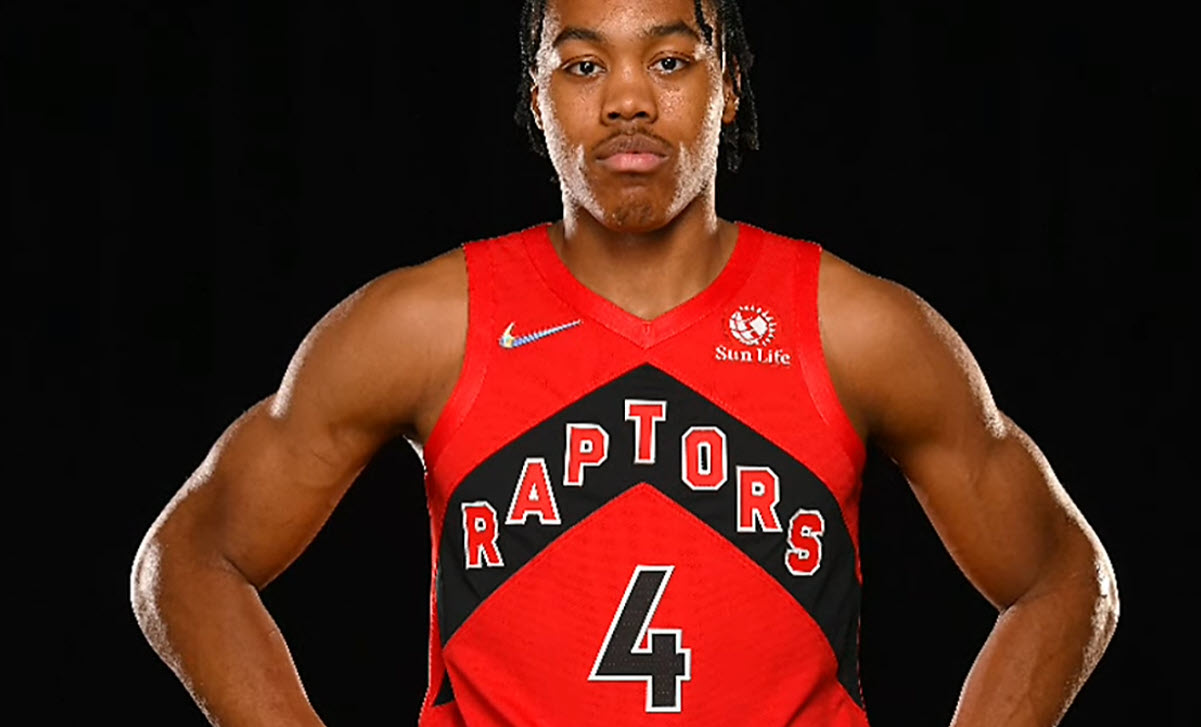
It’s also worth noting that this is essentially the same personnel the Raptors used last year. Their top seven players in minutes, and eight of their top 10, were on the team last year. One of the others, Christian Koloko, has been their most impactful individual defender off the bench. I don’t think Juancho Hernangomez’s 558 minutes have derailed the entire philosophy.
The principles haven’t changed much, either. Speaking broadly, these are the Raptors’ primary defensive beliefs.
Be aggressive to force turnovers and create deflections. This helps make opponents uncomfortable, can force the ball to lesser players later in the shot clock, and it helps fuel the transition offence. Because the Raptors’ halfcourt offence isn’t very good, those transition opportunities are very important. This is the one area the Raptors are still succeeding, leading the league in forced turnovers and deflections by a wide margin, which helps fuel the league’s top transition attack. The clock element is working, too, as opponents average 15 seconds per-offensive possession against Toronto, the third-slowest mark in the league (league-wide, efficiency decreases as time on the shot clock decreases).
Fouls and missed gambles are a worthwhile trade-off. This isn’t said explicitly, but the risks of trying to get into every passing lane are obvious. Guess wrong or miss and you’re relying on the next helper, and the next helper, and so on. At its best, we see the Raptors’ defence on a chain for 24 seconds, the help assignments instinctual. At its worst, we see them unaware of who the next assignment belongs to. The Raptors also foul at a top-five rate, which you might expect for such an aggressive team lacking rim-protection. Blow-bys aren’t as accepted, but even those can open gambling opportunities, like poking the ball free from behind after losing your man on a screen; the Raptors prefer that type of defence to conservatively keeping a man in front of you (this is the Dalano Banton vs. Malachi Flynn defensive debate).
Vision 6’9” is about everyone being able to guard anyone. This allows the team to take risks on the offensive glass without undercutting their transition defence. Since anyone can guard anyone, which players are back first on defence doesn’t matter. The Raptors have slowly morphed from a low-crash team to one of the most aggressive crashing teams in the league over the last few years. This is another part of the strategy that is mostly still working, as the Raptors are fourth in offensive rebounding rate and are a top-10 transition defence, a hard balance to strike. The matchup versatility also allowed the Raptors to throw a number of different looks at opposing top scorers, theoretically disrupting rhythm.
A lack of traditional rim-protection can be made up for with rim deterrence. In other words, not having a 7-footer at the rim can be fine if your defence is good enough everywhere else that an opponent can’t get to the rim as often. Whether it’s switching pick-and-rolls (something the Raptors don’t actually do a lot), showing a lot of size in tight spaces on drives (the Giannis Antetokounmpo strategy from 2019), pinching at the nail, sending two bodies to the post on the catch, or emphasizing a no-middle strategy, the Raptors believe being big, fast and versatile everywhere can make up for not having a drop-coverage behemoth down low.
This requires a lot of trust in everyone’s ability to help and recover, and to execute their individual assignments. It’s also the area the Raptors have struggled the most this year, as they’re in the bottom third of the league in opponent field-goal percentage at the rim and opponent volume at the rim. (They’re also near the top of the league in dunks allowed and allow the most assisted buckets at the rim, which probably matches your eye test.)
Defensive rebounding is a collective effort. Without a natural centre and with an aggressive scheme that has players in different spots on the floor all the time, securing rebounds is as much about attention and effort as anything. It’s a tricky balance to strike, because the Raptors also want to be out running off of opponent misses. The Raptors started the season better here only to regress, now ranking 20th on their own glass, which is additionally painful because they’re so good scoring on the run when they do come down with the rebound.
Corner threes aren’t a feature, but they’re not a bug, either. I’ve been writing some version of the corner threes story for three calendar years now. The first wave of the defensive approach led to a record-setting number of corner threes for opponents. Traditionally, the numbers have said that’s one of the worst spots on the floor to allow shots from. The Raptors believed, however, that creating turnovers and protecting the rim were more important, and because they were so long and so fast, they’d be able to contest those corner threes better than other teams. Those shots would also generally be taken by lesser players (stars don’t spend much time in the corners), where they’d be rushed late in the clock and have few options for driving past an aggressive close-out. The Raptors block more threes than any other team, and a deeper numbers dive shows those shots are coming slightly later than average. Still, for the second time in three years, opponents are hitting those shots at an above-average clip.
Cardio. The Raptors ask more out of their individual defenders than anyone. The aggression on the ball and semi-regular presses and traps are one thing. The Raptors also ask their defenders to rotate deep into the paint and all the way back out to the perimeter more than most teams. Technically the Raptors are only 10th in total defensive miles run per-game and average defensive speed (per NBA.com tracking data), but the minutes distribution changes how that looks. Anunoby (first), Pascal Siakam (fourth), Barnes (sixth), and Fred VanVleet (11th) are all at the top of the league in defensive distance travelled per-game, and Chris Boucher and Achiuwa are right near the top on a per-minute basis.
This doesn’t explain why the Raptors are so bad defending out of the gate (19th in first-quarter defensive rating), but it could help explain why they’ve struggled to find that extra gear in the fourth quarter (19th as well). (Oddly, the Raptors are the third-best defence in the clutch and the third best team overall by clutch net rating but are somehow 12-16 in those games. This is a hard team to figure out.)
Looking at the defence as a whole, it’s serving its function as a turnover-creator and doing a solid job stopping opponents in transition. Everything else has been a borderline disaster. Nearly 72 per cent of opponent shots come at the rim or from three and opponents shoot very well from both of those spots. Poor defensive rebounding undercuts their need to dominate the possession battle.
Despite the Raptors managing to take 353 more field-goal attempts than their opponents, the distribution and effectiveness of those shots has largely neutralized that advantage. The Raptors have outscored opponents by 10 overall but been outscored by 60 on the efficient type of shots at the rim, from the corner, or from the free-throw line. (And that’s with the Raptors being one of the highest free-throw teams in the league.)
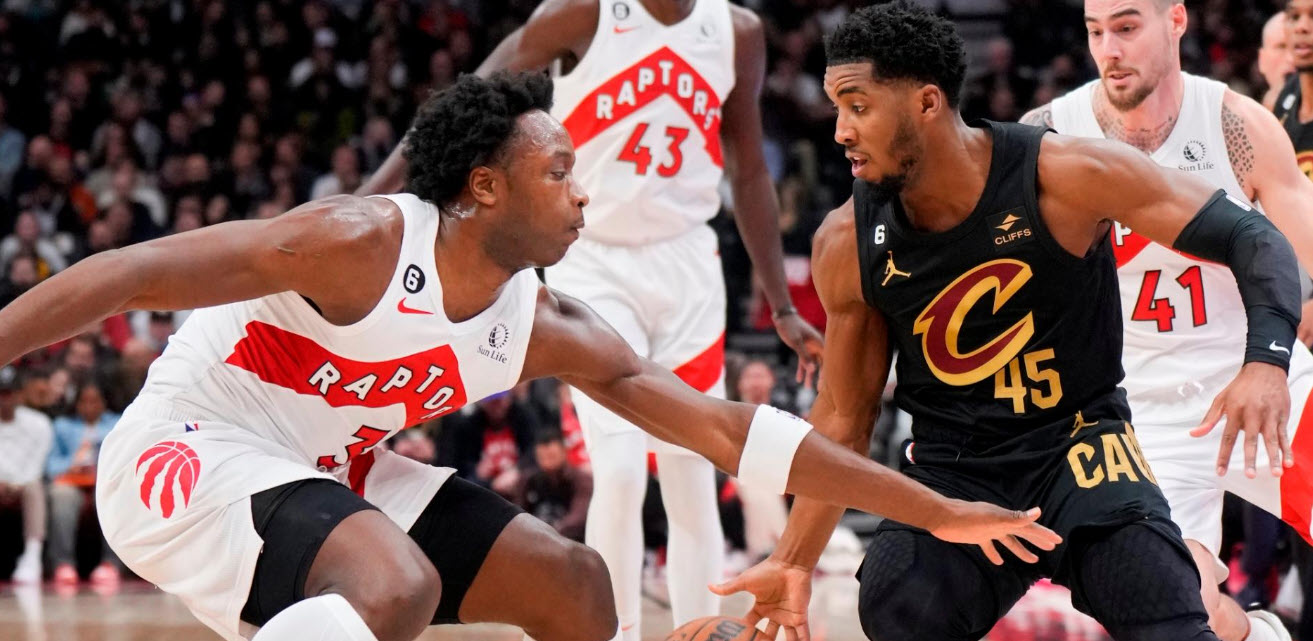
There are a few potential explanations for the overall defensive slide, none of them satisfying. Some individual defenders have slid at times, to be sure, most notably VanVleet at the point of attack. A hyper-aggressive scheme might be something opponents eventually “figure out” or get more comfortable playing against. The amount of mental and physical energy required for the system may have a cumulative cost, or may be easier to coax out of players when things are going well and the wins are following.
Looking forward, one thing that’s clear is that a more traditional rim protector could do wonders. Koloko should develop into at least a one-way weapon. Achiuwa is starting to unlock the defensive ceiling we saw late last year. Anunoby will once again miss out on All-Defence, this time because of team record. The pieces are there, and Nurse is an established weapon in close games and the playoffs.
Versatility, though, is about more than similar-sized players being able to switch assignments. It’s about stylistic versatility, too, being able to go to different looks when one struggles, to scheme based on matchup, and to find many paths to the same outcome (wins). Three years since Marc Gasol and Serge Ibaka left, the limits of a whirling, exciting, and ultimately centreless style may be revealing themselves.
By: Blake Murphy
Title: Why the Raptors’ overall approach on defence is no longer working for this team
Sourced From: www.sportsnet.ca/nba/article/why-the-raptors-overall-approach-on-defence-is-no-longer-working-for-this-team/
Published Date: 01-24-2023
Frequently Asked Questions
Why are Toronto Raptors called Raptors
The NBA's expansion into Canada in 1995 saw the founding of Toronto Raptors. The team's name and logo were inspired by the film Jurassic Park, released that same year. The team colours are bright red, purple, black, and silver.
The Raptors' first season of basketball was a struggle. They finished the season with a record of 21-61. They improved every year, and in 1999 they were ready to make their first playoff appearance.
The Raptors' most memorable moment occurred in 2019, when they won their inaugural NBA championship title. Toronto won their first title in thrilling six-game series against Golden State Warriors under the leadership of Kawhi and Kyle Lowry, the Raptors' backcourt duo.
The Raptors have been a beloved team in Canada since then. Toronto continues to be a hub of excitement for basketball fans all over the globe, from international stars to local talents.
The Toronto Raptors are an integral part of Canada's basketball legacy. Their success on court inspires young athletes across Canada. It is clear that the Raptors will be a favorite team for many years due to their loyal fans, innovative play style, and dedication to excellence.
What are the five most successful Raptors per-game scorers throughout Raptors' history?
Kawhi Leonard is the most prolific scorer of the team with 26.6 per game. Vince Carter follows with 23.4, Mike James (with 20.3), Chris Bosh (20.2), and DeMar DeRozan (20.2).
How did the Raptors win 2019's NBA title?
DeMar DeRozan, Jakob Poltl and a protected 2019 draft pick were traded by the Toronto Raptors to the San Antonio Spurs on July 18, 2018.
On February 7, 2019, Jonas Valanciunas C.J. was traded by the Raptors to the Memphis Grizzlies. Miles, and a 2024 second-round draft pick to the Memphis Grizzlies for Marc Gasol--another multiple All-Star and former Defensive Player of the Year--and signed Jeremy Lin shortly after that.
Two big trades by the Toronto Raptors sent shockwaves through NBA. DeMar DeRozan and Jakob Poltl were traded to the Raptors. A 2019 first-round draft selection (that was protected) was also traded to the San Antonio Spurs. In exchange for those players, they received Kawhi Leonard and Danny Green from the Spurs. They traded Jonas Valanciunas and Delon Wright C. J. Miles, along with a 2024 second-round selection to the Memphis Grizzlies, were traded to Marc Gasol--another All-Star and former Defender of the Year. These moves place the Raptors at the forefront of the race for a NBA title. Let's take a closer glance at each trade.
Kawhi Leonard trade was a risky move by the Raptors. Leonard is a top-5 pick in the league, when healthy, and just finished an MVP-caliber campaign. His injury last season limited him to playing just nine games, and there is concern about his long-term physical health. However, the Raptors decided that the reward was worth the risk and pulled the trigger on the deal. Leonard has been healthy thus far and is playing at an All Star standard. He is averaging 26 points, 8 rebounds, and 3 assists per game while shooting 49% from the field and 38% from three-point range. If he keeps his health good, he could be a key to the Raptors winning the NBA title.
Marc Gasol traded for Marc Gasol in a more short-term move. Gasol is in his mid-30s and is clearly past his prime. He is still a great player and brings valuable experience to the young Raptors team. He's averaging 15 points per game, 8 rebounds, 4 assists, and shoots 45% from the three-point line. C.J. and Delon Wright were both young assets that the Raptors had to give up. They acquired Gasol from Miles, but believe that his experience will prove invaluable in the playoffs.
The Raptors had a great start to the season, starting with a 6-0 victory. They broke the record for their best start in 20 games with a 16-4 record. They reached 20 wins faster that any time in their past history when they beat Cleveland Cavaliers 24 times. The Raptors were cautious with Leonard, resting him for more than 20 games throughout the season to prevent worsening his previous injury. They still managed to secure the 2nd seed East, just behind Milwaukee Bucks.
The Raptors continued to be successful in the playoffs. They beat the Philadelphia 76ers, Orlando Magic, and Milwaukee Bucks to make it to the NBA Finals for first time in their history. Leonard was named Finals' MVP as the Raptors won the first title against the Golden State Warriors.
The Toronto Raptors enjoyed a successful offseason. This has been a huge success. Two All-Stars are on the roster and the Raptors look poised to be contenders in the years ahead. They have proven that they are willing to take risks and make bold moves if it means creating a championship-calibre team. It will be interesting to see if they can keep up this success in the future.
Statistics
- This improved during the 2006–07 regular season to an average of 18,258 fans (13th in the league), 92.2 percent capacity at the Air Canada Centre. (en.wikipedia.org)
- This improved during the 2006–07 regular season to an average of 18,258 fans (13th in the league), 92.2 percent capacity at the Air Canada Centre. (en.wikipedia.org)
- Thomas named Raptors' GM NBA superstar to have 10% stake in the new franchise". (en.wikipedia.org)
- By 2018, estimated the Raptors were worth $1.4 billion, 12th in the NBA. (en.wikipedia.org)
- This improved during the 2006–07 regular season to an average of 18,258 fans (13th in the league), 92.2 percent capacity at the Air Canada Centre. (en.wikipedia.org)
External Links
vividseats.com
en.wiktionary.org
jerseymuseum.org
basketball-reference.com
How To
When is the best time to see a Toronto Raptors team play?
Toronto Raptors games are usually played during weekdays from October through April. Weekends are often reserved for other events, such as concerts and festivals.
It's best to book tickets well in advance because they tend to sell out quickly.
Wednesday is the most popular day for Toronto Raptors fans to visit. Because many fans arrive early to see pregame warmups, this is a popular day to attend a Toronto Raptors game.
Fans move on to Nathan Phillips Square after the game. It is located next door to ACC. They remain there until the final whistle.
A Toronto Raptor game at 8 pm is the best time. The stadium is empty before midnight, but fans return to celebrate their team's win.

